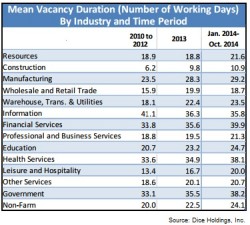 After years of asking workers to do more with less, companies in 2015 will focus on employee burnout.
After years of asking workers to do more with less, companies in 2015 will focus on employee burnout.
“Developing policies and procedures that relieve employees’ sense of being overwhelmed at work and promote sustainable work habits will be one of the top organizational change management initiatives of 2015,” says ClearRock, a leadership development, executive coaching, and outplacement firm.
Citing worker engagement studies from Gallup and a joint study by The Energy Project and the Harvard Business Review, ClearRock says that the high number of workers who are, to some extent, disengaged — 70 percent of the workforce, according to Gallup — results in lower productivity and the spread of negativity.
Overload, and especially work overload, cuts across all generations. Cornerstone, the HR technology provider, says in The State of Workplace Productivity Report that two-thirds of workers have experienced too much work; a majority of them report the situation is getting worse.
 Work overload is not the sole nor necessarily the leading reason workers disengage, but the stress it creates is one of the chief reasons they begin to job search. Various surveys list pay, career opportunities, job dissatisfaction, and manager relationships as important contributors to turnover. Nearly all of them, though, put stress or its companion, work/life balance, at the top of the list.
Work overload is not the sole nor necessarily the leading reason workers disengage, but the stress it creates is one of the chief reasons they begin to job search. Various surveys list pay, career opportunities, job dissatisfaction, and manager relationships as important contributors to turnover. Nearly all of them, though, put stress or its companion, work/life balance, at the top of the list.
While the level of American worker engagement is open to debate (a SHRM study found employees to be generally satisfied with their job and at least “moderately engaged”) what is not debatable is that turnover is increasing. The U.S. Bureau of Labor Statistics reports that the rate at which workers are quitting their job is the highest in six years and could reach 25 percent this year.
The cost of replacing a worker is expensive. According to the Society for Human Resource Management, “Research suggests that direct replacement costs can reach as high as 50-60 percent of an employee’s annual salary, with total costs associated with turnover ranging from 90 percent to 200 percent of annual salary.”
The more skilled the employee, and the longer it takes to replace them, the higher the cost. In today’s increasingly tight market, it takes 24.5 working days to fill a job. That’s an average for all jobs nationally. Some fields have average fill times that are much longer. Healthcare jobs average 38.1 days to fill; financial services’ average fill time is 39.9 business days.
As the labor market continues to tighten, analysts predict employers will raise wages. A Morgan Stanley economist forecasts an average wage increase next year of 2.5 percent. The average for the last several years has been 2 percent. For industries where available talent outstrips the demand — IT, for instance — starting wages in 2015 could go up 4 or more percent over 2014.
Pay improvement will help with retention. But companies will need to do more to keep their most valued employees from looking for greener — and calmer — workplaces. HR thought leader and consultant Josh Bersin notes, “When people leave it is usually a combination of the organization and all its elements that cause turnover.”
To improve engagement and reduce turnover takes a holistic approach. The goal, Bersin observes, is to create an environment where people are excited about going to work.
ClearRock says the employers with whom it consults have taken a number of initiatives to address stress. Among those that ClearRock lists are:
- Strengthening the delegation skills of managers so direct reports can take on more responsibility.
- Building the communication skills of managers.
- Ensuring the “right fit” between employees and work, with 80 percent of the work corresponding with the employee’s strengths — rather than the other way around, as is most often the case today.
- Training employees in how to deal with information overload from emails, texts, calls, and meetings.
- Instructing employees in how to prioritize their work and more effectively manage their time.
- Setting aside some time each day for workers to think and focus free of distractions.
The success of these initiatives, says ClearRock, requires careful change management that includes asking employees for their suggestions, and regular open and full communication. Its seven points are:
- Acquire broad-based support.
- Ask employees for solutions.
- Build a mandate for change.
- Lead by example.
- Manage the impact of change on others.
- Communicate fully and frequently.
- Provide a forum for reaction.